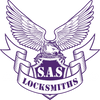- What type of door closer do I need?
- What is back check?
- What is delayed action?
- What is the closing speed?
- What is the latching speed?
- What is a hold open or a hold open arm?
- I live in an apartment and I have a closer on the door which makes the door close all the time. It’s a nuisance and I’ve been locked out because of it. Can you take off the door closer?
- Our door slams all the time even though it’s got a door closer on it, can you fix it or does it need to be replaced?
Door Closes FAQs
What type of door closer do I need?
That would depend on what type of door you have and what your needs are. Selecting the right door closer is important as not all door closers are the same. Factors such as door size, weight and type all determine what closer is best suitable. The most common type of closer is a surface mounted one, but there are many types of these.
You can start by having a look through the Lockwood Surface Mounted Door Closers Catalogue as a guide, and then contact us so we can help you choose the best possible closer for you.
What is back check?
What is delayed action?
What is the closing speed?
The closing speed is the time frame from the start of the door closing to just before the door hits it latch point. This is between roughly 180° and 10°. This speed can be adjusted on the closer to speed up or slow down the closing of the door depending on what is needed. Although similar, this feature is independent of the delayed action, and can be adjusted to work with or without it.
What is the latching speed?
The latching zone is the last 10° of the door closing before it is fully shut. When a door is having problems with slamming or not closing fully, it is this part that usually needs adjusting.
